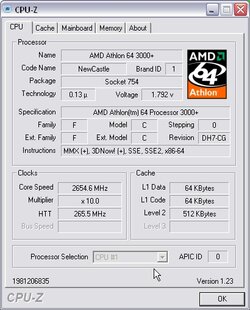CandymanCan
Disabled
- Joined
- Aug 14, 2003
- Location
- Woodbridge, Va
Im trying to figure out why my cpu is stuck @ 2500mhz right now, i can get 2550-2600-2650, all the way up to a 3130mhz post, but any amount of voltage like 1.6-1.7-1.8-1.85v doesnt seem to matter for the cpu. Even cooling doesnt seem to matter also.
I know i can get 2600mhz stable if i keep messing with the system but i think its wierd how 2510mhz will work with just 1.6v, but anything higher then 2500 like 2515mhz doesnt work even with 1.7-1.8-1.85v.
Wierd.
I know i can get 2600mhz stable if i keep messing with the system but i think its wierd how 2510mhz will work with just 1.6v, but anything higher then 2500 like 2515mhz doesnt work even with 1.7-1.8-1.85v.
Wierd.
Last edited:
